Corrupted system files on Windows 11 can cause booting issues or various app glitches. The good news is that there are several simple ways to fix corrupted files in Windows 11. I’ve compiled some of the best methods you can try to resolve the problem.
But before jumping into those:
- Update Windows 11 – Go to Settings>Windows Update>Check for Updates>Install all. Restart your system to apply them.
If that didn’t help, try these solutions:
1. Uninstall Recent Updates
Ironically, recent updates can sometimes cause system files to be corrupted.
1. Open Windows Update and select Update history.
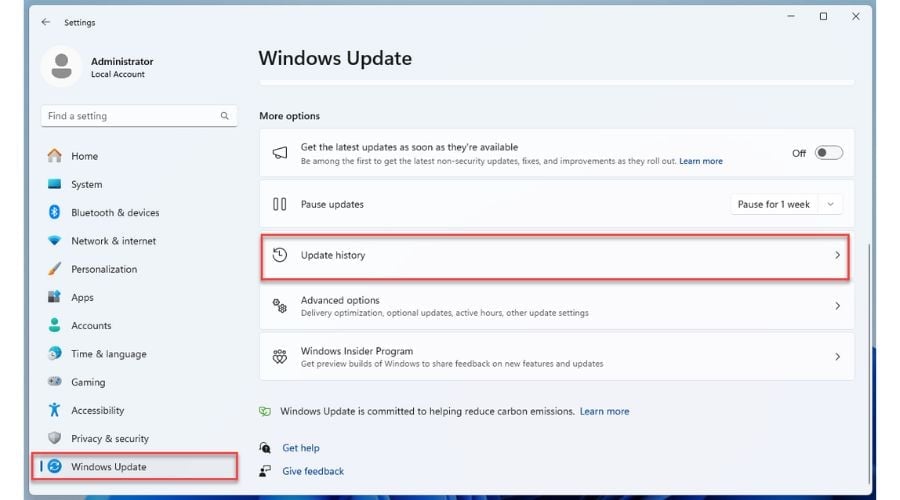
2. Click the Uninstall updates button and select the latest update that you suspect is causing the problem.
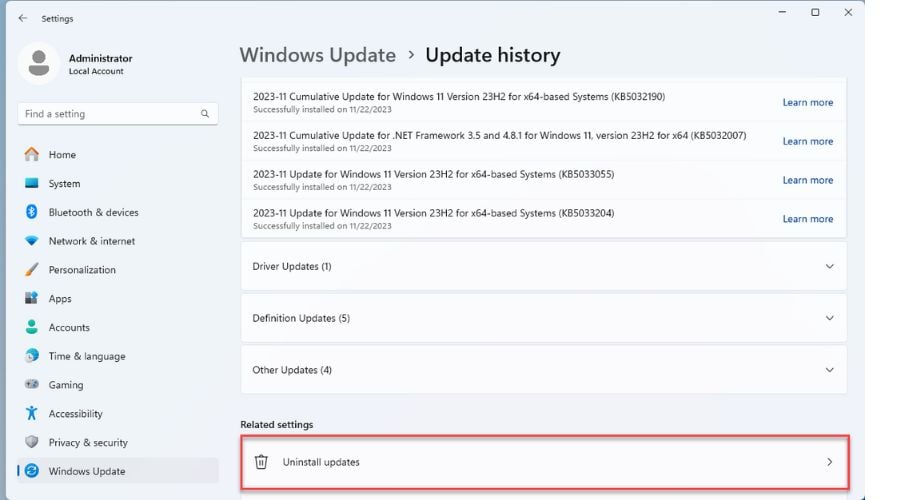
3. After the uninstall is done, restart your PC to check for and fix corrupted system files.
2. Use CHKDSK Command
The CHKDSK command is a useful tool to check for logical and physical errors in your Windows 11 file system on the primary disk. You can use additional parameters, such as /f, /b, /r, /x, etc, to fix them.
1. Type “Command Prompt” in the Search bar. Then, from the results for the Command Prompt, right-click to choose “Run as administrator.”
2. In the Command Prompt, type “chkdsk /f /r” and press Enter. (chkdsk /f fixes errors on the disk, and chkdsk /r locates bad sectors and recovers readable information.)

3. The disk must be locked for chkdsk to complete its work, so you may need to reset your computer. The scan will be performed at system startup.
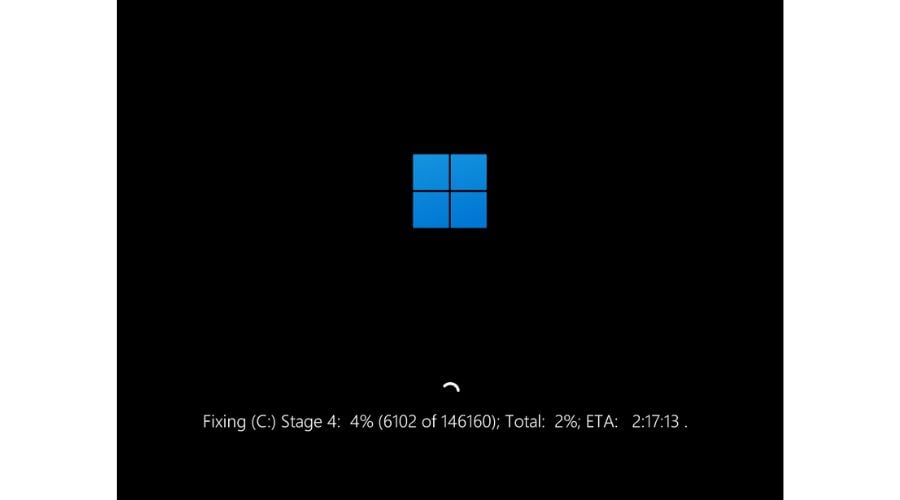
4. If chkdsk finds bad sectors, it’ll try to repair them. However, if this isn’t the case, I recommend that you urgently back up important data and replace your disk with a new one.
3. Use the SFC and DISM Command
Windows 11 includes a useful tool called System File Checker (SFC) that scans your computer, checks the integrity of each system file, and repairs any corrupt or missing files. You can run an SFC scan followed by a DISM (Deployment Image Servicing and Management) scan to locate and fix corrupted files.
1. Run Command Prompt as an administrator as I described before.
2. In the Command Prompt, type; “sfc /scannow” and press Enter.

3. SFC will inform you if it detects any problems and automatically repair them. Otherwise, you’ll receive a message that no issues were found.
DISM scans the recovery and boot sectors and restores damaged files:
1. Run Command Prompt as an administrator.
2. In the Command Prompt, type “DISM /Online /Cleanup-Image /RestoreHealth” and press Enter.

3. This DISM scan might take some time. Wait until you see the message “The operation completed successfully.” After that, restart your PC to see if Windows 11 corrupt file repair is successful.
4. Perform System Restore
Note that this method requires System Restore to be enabled on your PC.
1. Click on the Search bar, type “recovery,” and click “Recovery” in the search result.
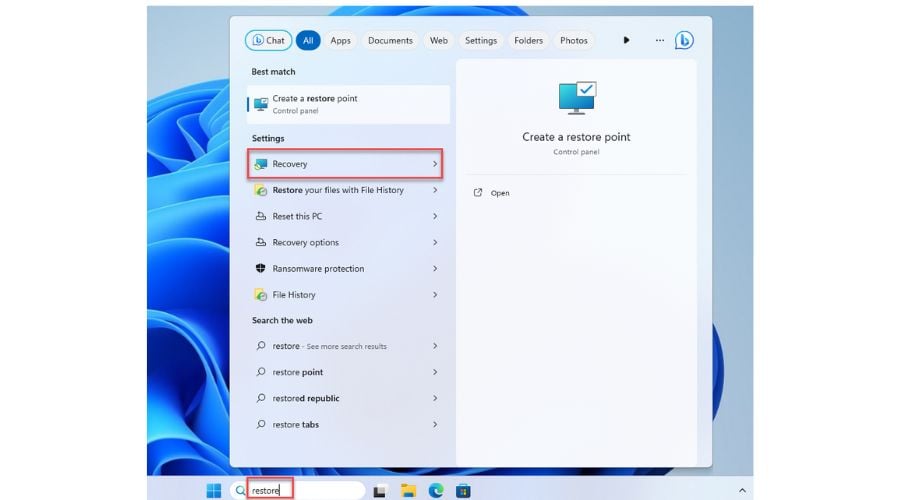
2. Select “Open System Restore” and select your preferred system restore point.
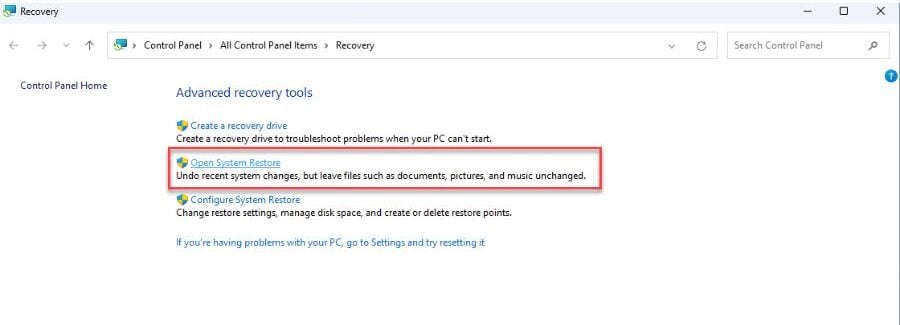
5. Startup Repair
Windows 11 Startup Repair is a built-in troubleshooting tool that fixes booting issues, but it can also fix corrupted files on Windows 11.
1. Right-click the Windows Start icon and select Restart while holding down the Shift key on the keyboard.
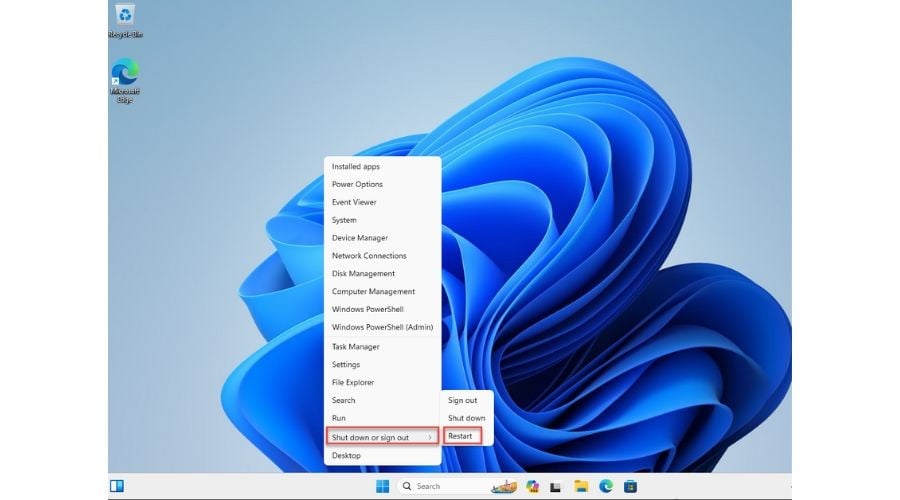
2. When you see the Windows 11 recovery mode screen, choose the Troubleshoot option.
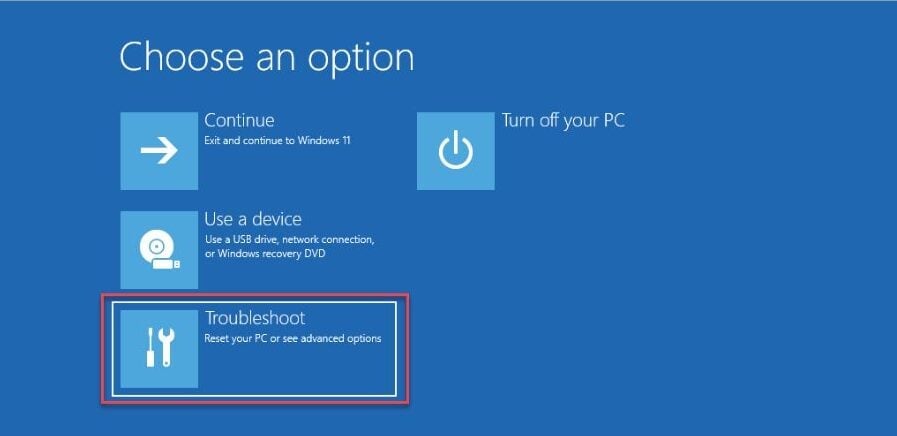
3. Choose the Advanced Options from the Troubleshooting list.
4. Click on Startup Repair.
5. Now wait for Startup Repair to scan your PC and repair any issues that may be present.
6. Check RAM
To help you diagnose any RAM-related issues, Windows 11 offers a helpful tool called the Windows Memory Diagnostic Tool.
1. Press the Win + R keys simultaneously to show the Run dialog box.
2. Type “mdsched” and press Enter to open the Windows Memory Diagnostic Tool.
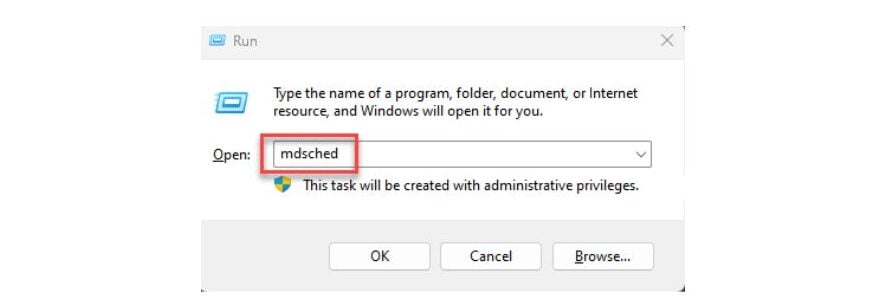
3. You’ll see two options:
- “Restart now and check for problems (recommended)” – if you want to troubleshoot memory-related issues immediately by rebooting your PC.
- “Check for problems the next time I start my computer” – if you want to schedule the tool to run the next time your PC starts.
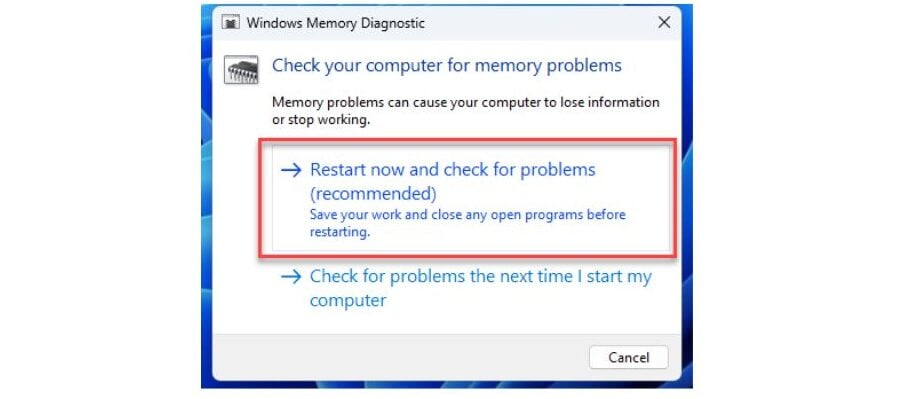
4. The Windows Memory Diagnostic Tool will automatically start scanning the system in Standard mode for memory-related issues.
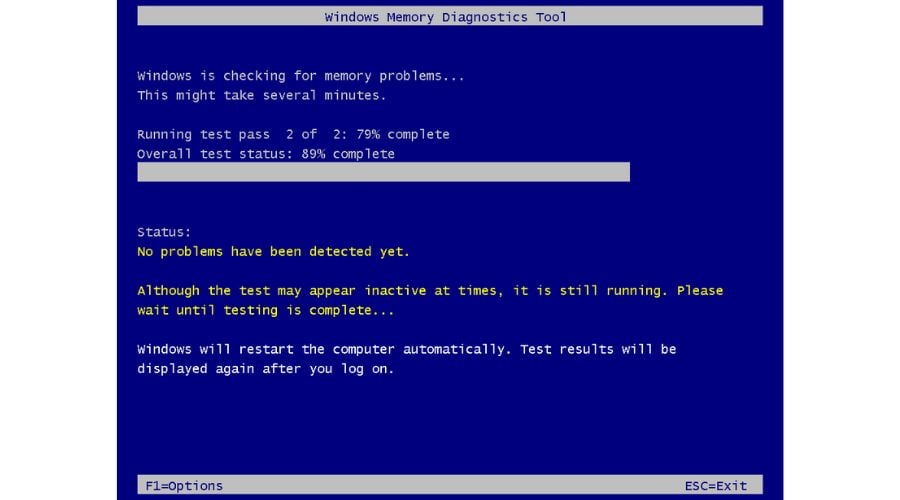
You may proceed to the next step if no issues are detected. However, if any problems are found, it might be time to replace the RAM stick(s) on your computer and check if it resolves your corrupted Windows 11 data.
7. Reset Your Windows 11 PC
If nothing else works, you should reset or reinstall Windows 11. If you’re concerned about data loss, you can follow the steps outlined below:
1. Right-click on the Start button and select Settings.
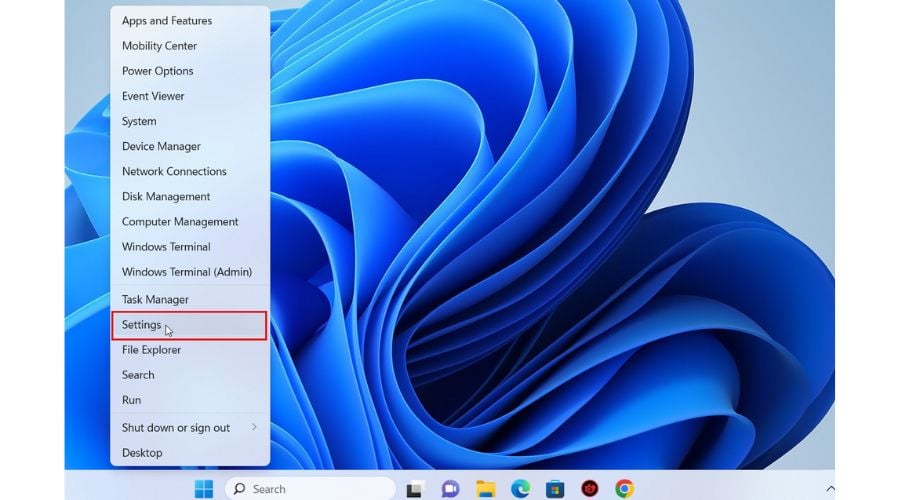
2. Select “System” from the left sidebar. Navigate to the “Recovery” option from the right side.
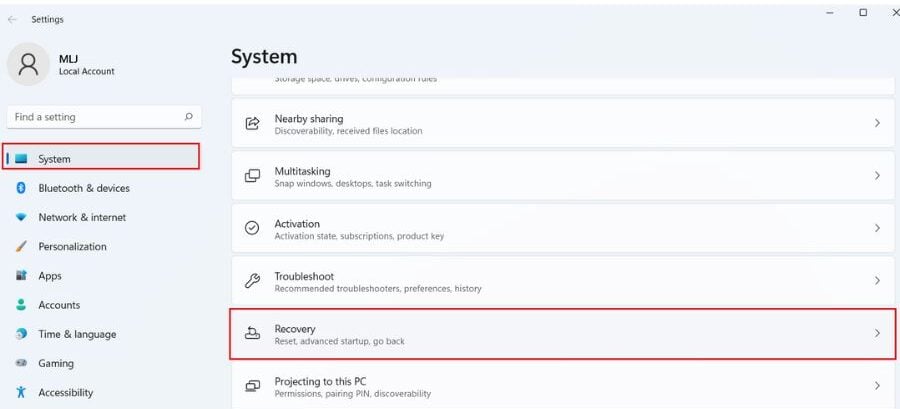
3. On the Recovery page, click on the “Reset PC” button.
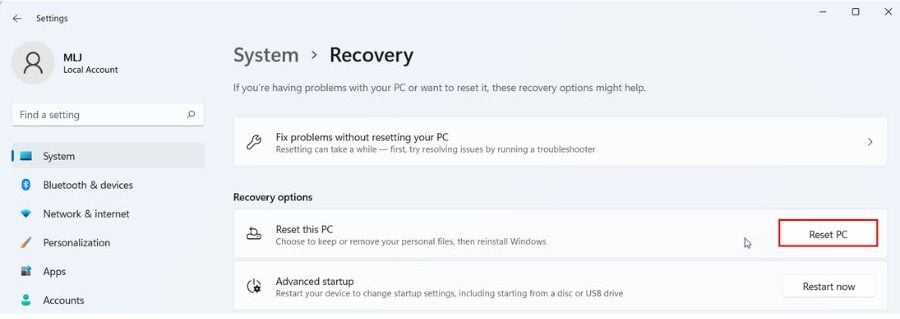
4. You’ll see two options:
- If you want to keep your personal files, select “Keep My Files.” (I recommend this option).
- If you want to reset your PC completely and erase all your files, apps, and system preferences, select “Remove everything.“
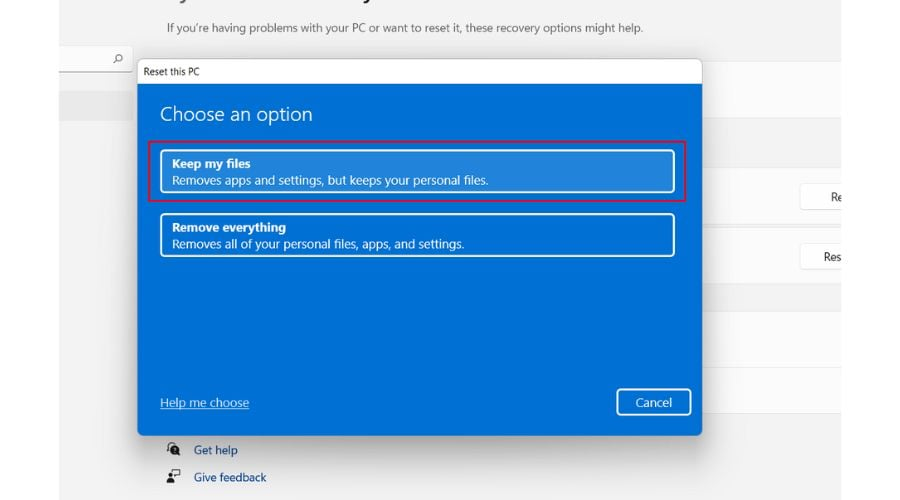
5. To reinstall Windows 11, choose “Cloud download” if you installed it manually and have a working internet connection. Choose “Local reinstall” if your PC comes with Windows 11 pre-installed.
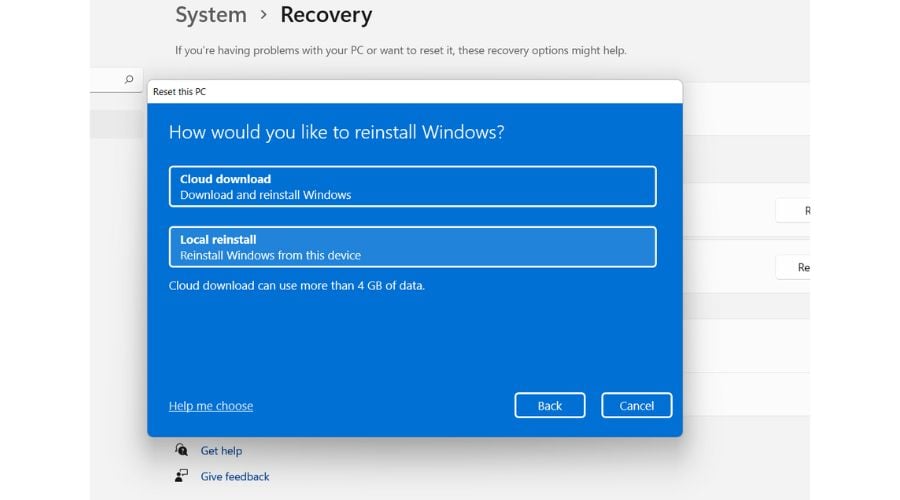
6. On the Additional Settings page, click on the Next button.
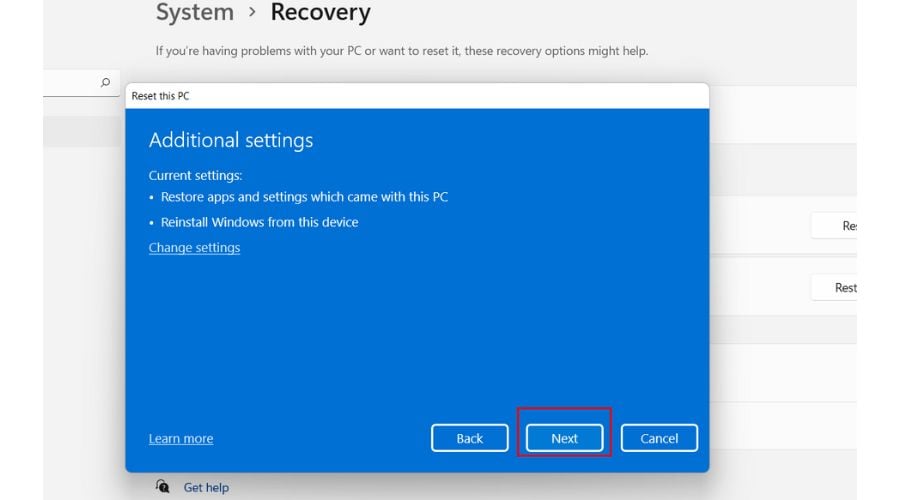
7. Finally, click the “Reset” button. In addition, you can view the list of apps that will be removed before resetting.
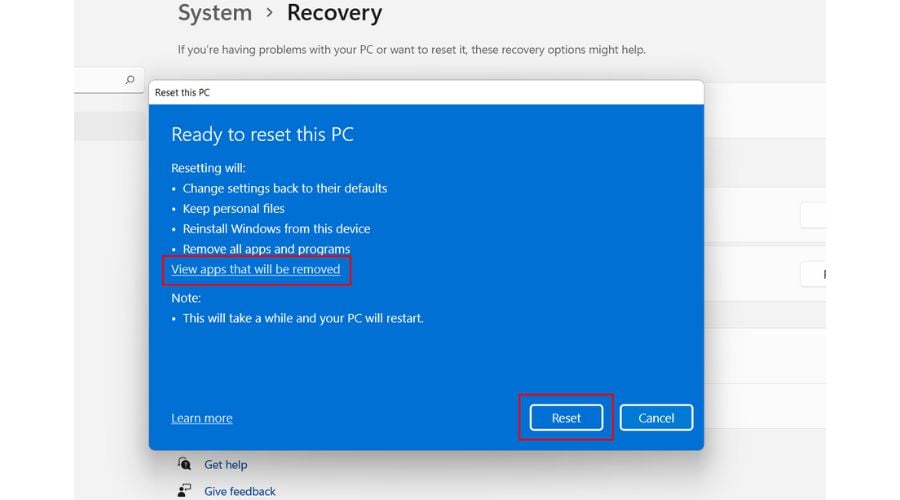
The system reset process may take up to an hour depending on your PC and the options you choose.
You may also be interested in:
- FIX: The file or directory is corrupted and unreadable
- DRIVER_CORRUPTED_MMPOOL Error – 9 Easy Ways To Fix
What Causes Corrupted System Files on Windows 11?
Corrupted system files on Windows 11 are commonly caused by:
- Windows OS issues like glitches, bugs, crashes, or update failures
- Hardware issues like memory or disk fail
- Malware or virus activity
- Unsafe removal of USB storage devices
- Improper computer shut-downs
- Improper handling of files, like incorrect saving or stopping the relocation process.
Corrupted Windows 11 files result in information becoming unreadable or mistakenly modified. Such glitches can render files unusable or cause unexpected behavior in applications. When data becomes corrupted, it can partially or entirely lose crucial information.
Summary
So, here are 7 simple ways to fix corrupted system files on Windows 11. Your last resort may be to perform a clean OS reinstallation. However, be sure to back up any important files before doing so.
